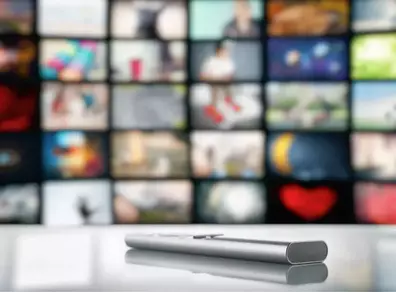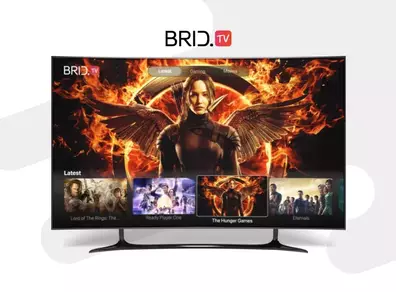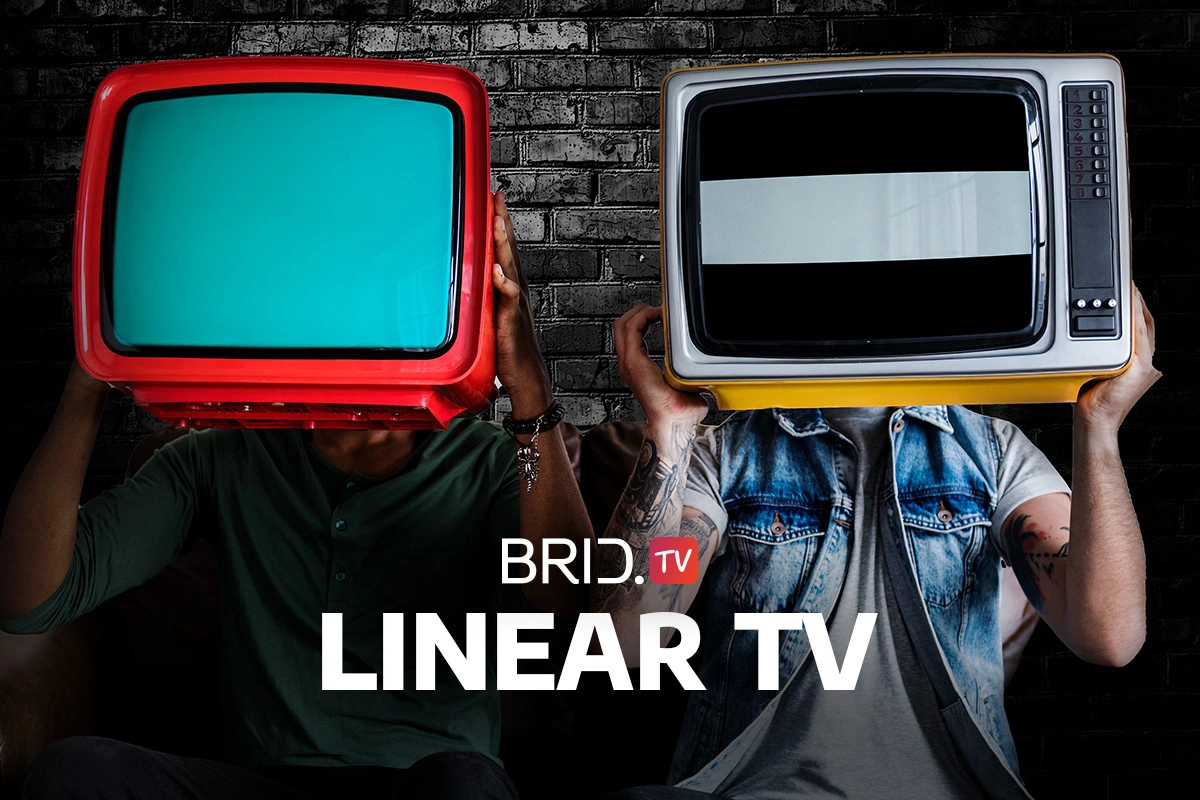Every time we turn on the TV to see the news or a new episode of our favorite show, we’re watching linear TV. but what does this term mean exactly? And isn’t traditional TV dying anyway? Let’s take a closer look at the definition of linear television, how it works exactly, and what the future holds for it.
What Is Linear TV?
Put simply, linear TV is the traditional television form with content delivered via satellite or cable. This stands in contrast to OTT, which is delivered over the internet.
The term “linear” comes from the linear content delivery method. In other words, content streams according to a predetermined schedule, and all viewers watch it at the same time. So in a wider sense, linear TV can refer to any content delivered in this way, regardless of the means of delivery. In this case, the definition of linear television can encompass some forms of OTT; namely FAST — free ad-supported TV.
How Does Linear TV Work?
The content that streams through linear TV is usually prerecorded and hosted on a video server. Special software is responsible for scheduling the time slots for each piece of content and advertisements.
Streaming live events through linear television works a little differently. There is usually a control center that receives raw footage. There, the producing team edits the footage in almost real time and sends it further to viewers via a cable network, satellite, or, in the case of FAST, the internet.
What’s the Difference Between Linear TV, OTT, CTV, and Cable TV?
The video broadcasting industry is riddled with vague terms and abbreviations. On top of this, what they denote is sometimes just as unclear. Many of these terms overlap or are even (correctly or incorrectly) used interchangeably. So let’s clear up the differences between linear television and some of the common terms such as OTT, CTV, and cable TV.
Linear TV vs. OTT
If we stick to the narrow definition of linear television being traditional satellite or cable TV, OTT is basically the exact opposite. OTT broadcasting bypasses traditional delivery channels and uses the broadband network instead.
However, if we consider linear TV to be any content streamed in a linear fashion, free ad-supported TV is an area where these terms overlap. Namely, FAST is an OTT content delivery method that encompasses linear content scheduling delivered via the internet.
Linear TV vs. CTV
Although they both contain TV in their names, linear TV and connected TV (CTV) denote quite different things. While linear TV explains how content is delivered, CTV refers to where it is delivered.
Namely, connected TV is any TV connected to the internet. This can be a smart television set or a TV connected to a stick, box, or gaming console. CTV can be used to stream linear TV content.
Linear TV vs. Cable TV
As we have already mentioned, the narrow definition of linear TV encompasses traditional broadcasting formats such as cable TV and satellite TV. We could say that linear television is the delivery method used by cable TV to broadcast content.
Is Linear TV Obsolete Yet?
Cable TV is dying. According to Statista, the number of U.S. households subscribed to cable TV services dropped from 47% in 2019 to 42% in 2022, and this downward trend is predicted to continue. If we look at the audience aged 18–24, the statistics are even gloomier. About 50% of this demographic is expected to cut the cord by 2025.
But will the slow death of cable and satellite necessarily end linear TV overall? Sure, if we stick to the narrow definition of linear TV. But the linear method of broadcasting content is here to stay; it will just have to adapt to new distribution channels.

What’s the Future of Linear TV?
A shift toward online delivery methods, such as OTT and IPTV, is necessary to save linear television from demise. And there, it is destined to thrive.
The truth is, linear content delivery is not nearly as obsolete as people think. There is a certain level of nostalgia involved in waiting for a new episode of your favorite show to air.
On top of this, linear TV still reigns over live broadcasting. According to NFL, over 100 million viewers watched the Super Bowl on TV. By contrast, only around 11 million streamed it online. These are some big shoes that live event streaming has yet to fill.
Lastly, another factor keeping linear TV relevant is the older portion of the audience who might not be as tech-savvy. A full switch to VOD can be too big of a step for them, making FAST and IPTV a great middle ground.
How Can Broadcasters Adapt to These Changes?
With the decreasing popularity of traditional television, TV ad spending is also shrinking. Not to mention that linear TV advertising is generally not nearly as effective as OTT advertising. As advertisers are turning away from TV, this broadcasting channel is becoming less and less profitable.
To stay relevant and keep monetizing content, broadcasters have to adapt to the ever-changing world of video content delivery. Starting an OTT streaming service and introducing on-demand content is a great first step in the right direction. This would also open up new monetization channels commonly used by OTT services. In addition to introducing SVOD and TVOD, they would also have new forms of ad inventory to sell.
In addition to web-based OTT services, broadcasters have a lot to gain by building an OTT app. Offering linear and on-demand content through CTV and other OTT devices can re-spark interest in traditional media but also reach new audiences.
In short, the benefits of having an OTT app as a broadcaster are multifold. But how do you launch one?
Launch an OTT or CTV App With Brid.TV
Contrary to what many believe, launching an OTT application doesn’t have to cost tens of thousands of dollars, nor take months to complete. Unless you have very specific requirements for your app, there is no reason to hire a developer to build an OTT app from scratch.
Instead, you can turn to a professional OTT platform and use their white-label app builder. While this will give you less control over the appearance of the final product, the best platforms have sufficient customization options to make the app match the visual identity of your brand to a T.
With Brid.TV’s white-label OTT and CTV app builder and state-of-the-art HTML5 player, you can rest assured your audience will be thrilled with the new addition to your broadcasting portfolio. Brid.TV also lets you generate video ad revenue and turn your OTT content into another stable source of income. In other words, with us, you get a robust online video platform that will take care of all your OTT needs.


